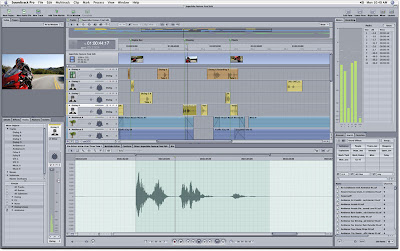There are basically two types of font:
Serif Fonts - such as Times and Courier
Serif fonts are generally more traditional and often slightly more formal than sans serif fonts.
Serif fonts are usually seen within books and newspapers.
(A serif is the extra little detail at the end of each stroke of every letter, this is circled below).
Sans Serif Fonts - such as Ariel and Helvetica
Sans Serif fonts are generally seen as more modern and informal, in addition, sans serif fonts are seen as more 'friendly', this is because of their bold, soft and rounded appearance.
Sans Serif fonts are typically used within magazines, comics etc.
Font Analysis of Pearl Harbor:
The title, 'Pearl Harbor', has been written in the serif font, Palatino, which instantly leads the audience to beleive that the film will be serious and more formal than informal.
In addition, the wording itself has been written entirely in higher case letters which, aswell as the font style, signifies the importance and magnitude of the film and also represents the importance of the characters we can see in the image.
The picture itself shows high ranked officers; this we can tell because of the medals worn on thier uniforms, in addition, the characters are assembled in line with one another, therefore, the way in which the title has been written, relates perfectly to the imagery since the lettering in the title is all lined up next to eachother and written in capitals, this has strong connotations of the army because of the ordering, regementation and lined up assembling which the army is ment to have.
The serif font that this film has chosen to use for the title, suggests formality and respect since we often see this type of font within formal and respectful peices of writing.
Moreover, I beleive this style of font has been choosen because of the subject matter that this film highlights, sinse the film is about war and has a lot of historical importance, it is intended to cater towards a slightly more mature audience with historical interest, possibley a more educated, middle aged person with this sort of awareness would be prone to watching the film.
The target audience for this film would be people possibley more familiar with this particular style font, who would come across it in newspapers i.e. 'The Independent' or 'The Guardian' .
So through the use of the Palatino font, written all in capital lettering, we get a clear sense as to who the film is aimed at and we also gain a rough indication as to what the film will be about.
Font analysis of Rocky:
The title 'Rocky', has been written in the sans serif font, Franklin Gothic heavy; this suggests that the film may be quite light hearted and informal since the wording is round, big and bold.
However the wording has been written entirely in capital lettering which suggests that the character in the film will be powerful, bold and blocky, similar to the letters in the title.
The picture on the cover shows a strong male character holding a woman's hand which signifies that, even though the main character within the film is powerful, strong and dominant, he still has a softer side to himself.
In addition, because of the fact that the two characters are shown without any detail or colour, the audience may assume that they lead a simple life together.
Moreover, the wording is tightly packed onto the front cover, with it's first and last letters pushing against the sides of the cover; this imitates a fist pushing forward with each letter acting as a knuckle.
The fact that the title looks like a fist links to the theme of the film which is boxing.
The target audience for this film would be people interested in boxing or action films with drama sub-genres since the film includes fighting as well as drama.
Lastly, the character is reflected in the Franklin Gothic Heavy font title, since the letters are plain and simple like 'Rocky'.
Font analysis of Rocky:
The title 'Rocky', has been written in the sans serif font, Franklin Gothic heavy; this suggests that the film may be quite light hearted and informal since the wording is round, big and bold.
However the wording has been written entirely in capital lettering which suggests that the character in the film will be powerful, bold and blocky, similar to the letters in the title.
The picture on the cover shows a strong male character holding a woman's hand which signifies that, even though the main character within the film is powerful, strong and dominant, he still has a softer side to himself.
In addition, because of the fact that the two characters are shown without any detail or colour, the audience may assume that they lead a simple life together.
Moreover, the wording is tightly packed onto the front cover, with it's first and last letters pushing against the sides of the cover; this imitates a fist pushing forward with each letter acting as a knuckle.
The fact that the title looks like a fist links to the theme of the film which is boxing.
The target audience for this film would be people interested in boxing or action films with drama sub-genres since the film includes fighting as well as drama.
Lastly, the character is reflected in the Franklin Gothic Heavy font title, since the letters are plain and simple like 'Rocky'.
































